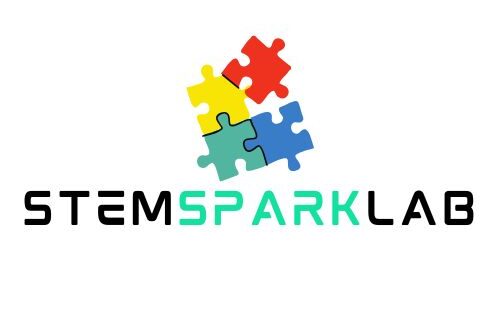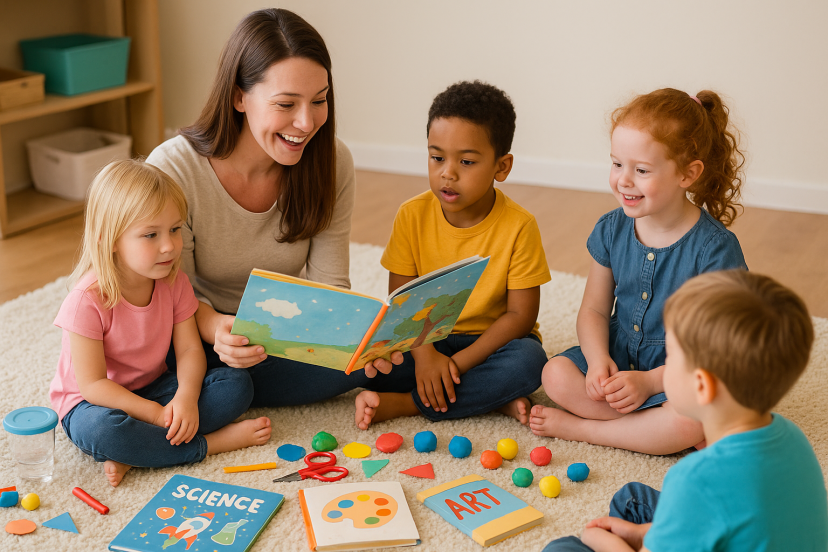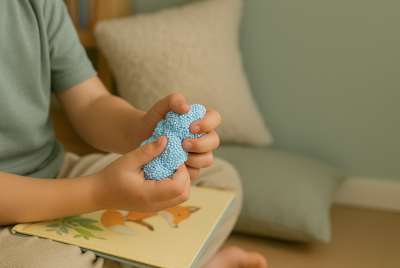STEAM Storytime + Activity Ideas for Ages 3–7
We may earn a commission for purchases made using our links. Please see our disclosure to learn more.
Have you ever noticed how a simple story can light up a child’s entire world? ✨ Maybe it’s the way they lean in when the dragon takes flight or giggle when a clever mouse outsmarts a fox. But imagine if those stories didn’t just entertain—they inspired curiosity, creativity, and discovery. That’s where STEAM Storytime comes in — a playful mix of reading and hands-on exploration that helps children learn through imagination. Whether you’re a parent, teacher, or caregiver, this approach turns storytime into something magical, meaningful, and yes—educational too.
So grab a cozy blanket, a favorite book, and maybe some glue sticks or building blocks, because we’re diving into a world where stories spark science, art, and problem-solving, all before bedtime.
What Is STEAM Storytime, Really?
At its core, STEAM Storytime combines storytelling with activities that explore Science, Technology, Engineering, Art, and Math.
It’s not about complex experiments or worksheets—it’s about inviting curiosity. When a story introduces a character who builds, invents, or questions, you follow it up with a hands-on activity that brings that curiosity to life.
Think of it this way: reading The Very Hungry Caterpillar doesn’t stop at “The End.” It turns into a counting, color-sorting, or butterfly-life-cycle exploration right after you close the book.
It’s learning disguised as play—and that’s the most powerful kind of learning there is.
Why STEAM Storytime Matters
Between the ages of 3 and 7, children develop foundational skills that shape how they think, question, and interact with the world.
Traditional storytime strengthens language and literacy, but adding STEAM layers on critical thinking, creativity, and problem-solving. When kids experiment, they don’t just memorize—they understand.
It also helps them develop:
- Resilience: When an activity “fails,” they learn to try again.
- Curiosity: They start asking “what if?” and “why?” on their own.
- Collaboration: Working together fosters communication and empathy.
The goal isn’t perfection—it’s process. Every “oops” moment becomes a learning opportunity.
How to Bring STEAM Into Storytime
You don’t need a science lab or fancy gadgets. You just need a story and a spirit of exploration.
Here’s a simple rhythm to follow:
- Read the story together.
- Ask a question that sparks curiosity.
- Do a quick hands-on activity connected to the theme.
- Reflect with your child: “What did we learn? What surprised you?”
That’s it—four small steps that make learning stick.
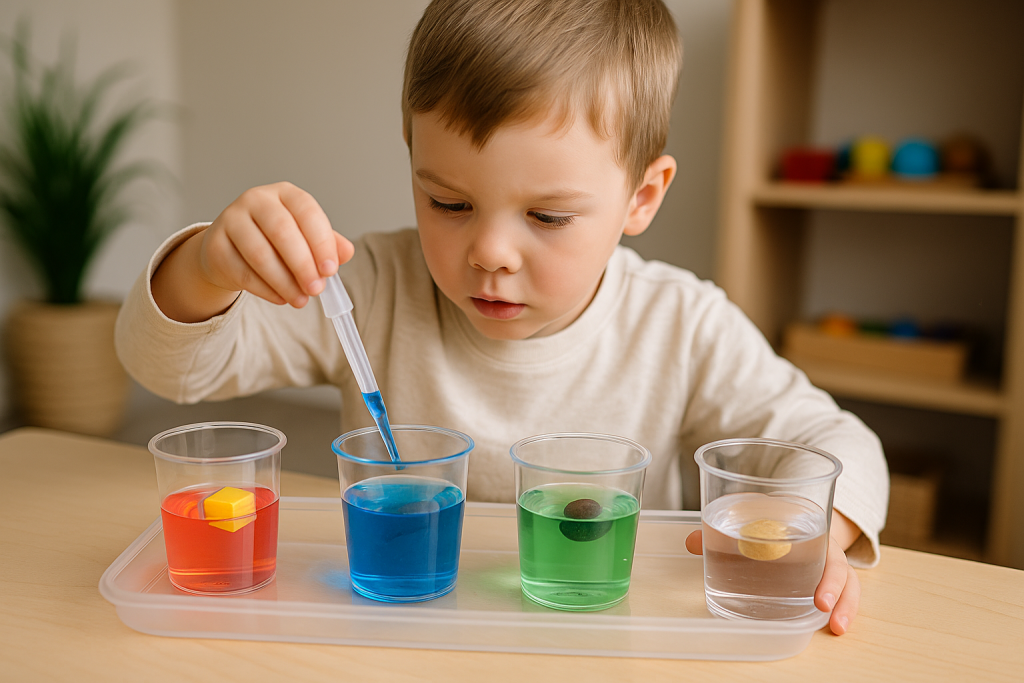
The Perfect Age for STEAM Storytime
Ages 3–7 are ideal because kids at this stage are eager explorers.
At 3 and 4, they learn best through touch, movement, and pretend play. Give them sensory materials and open-ended activities.
At 5–7, they’re ready to problem-solve, follow multi-step directions, and make predictions. That’s when you can introduce simple experiments, building projects, and pattern recognition.
The beauty of STEAM Storytime is that it grows with your child. One day it’s color mixing with paint; a year later, it’s building a bridge strong enough for toy cars.
How to Choose the Right Story
You don’t need special “STEM books” (though those are great). Many children’s books naturally lend themselves to STEAM exploration.
Look for stories that:
- Feature problem-solving or invention
- Highlight nature, weather, or science
- Encourage imagination or creativity
- Involve counting, sorting, or patterns
Some wonderful picks include:
- Rosie Revere, Engineer by Andrea Beaty — teaches persistence through trial and error.
- The Most Magnificent Thing by Ashley Spires — celebrates creativity and frustration as part of learning.
- Ada Twist, Scientist by Andrea Beaty — perfect for inquisitive minds who love to ask “why?”
- How to Catch a Star by Oliver Jeffers — inspires early physics and dreaming big.
- The Dot by Peter H. Reynolds — introduces the power of art and confidence.
Fun STEAM Storytime Activities (By Theme)
Here are simple, hands-on activities inspired by favorite stories — all doable with everyday items.
Engineering: Build It Like Rosie
After reading Rosie Revere, Engineer, let your child design their own “invention.”
Use cardboard boxes, paper rolls, and tape. Ask: “What problem does it solve?”
- Teaches: structural stability and creative thinking
- Tip: Snap a photo of each creation for your “Invention Journal.”
Art + Science: Rainbow Reflections
Inspired by The Rainbow Fish or A Color of His Own? Make a rainbow with sunlight, a mirror, and a bowl of water.
- Teaches: light refraction and color blending
- Bonus: Capture the reflection on paper with crayons for a keepsake. 🌈
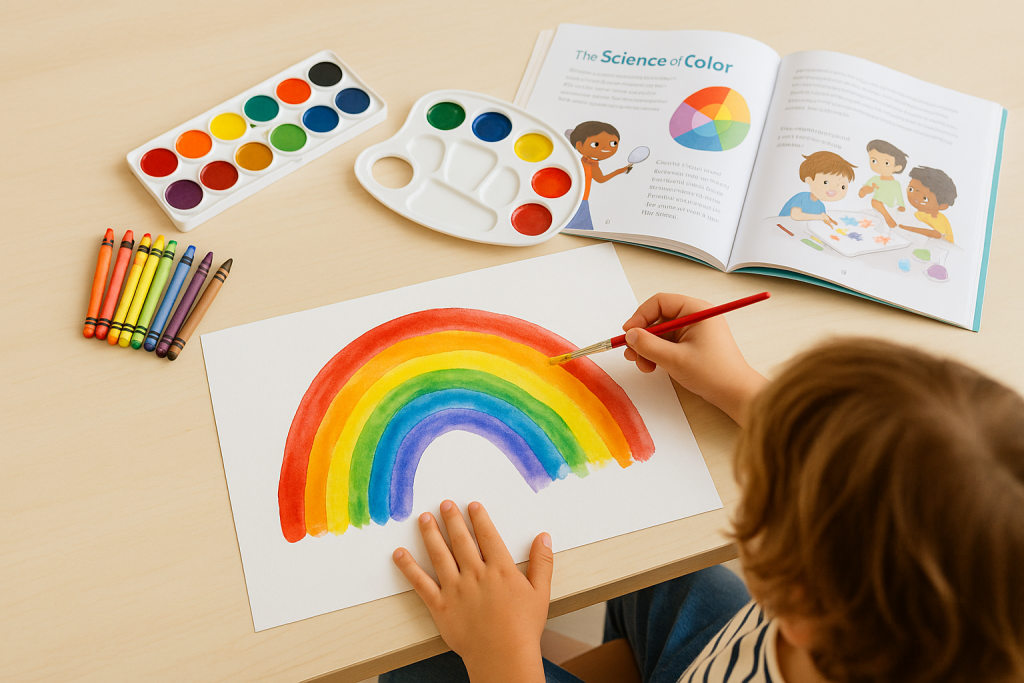
Math: Counting with The Very Hungry Caterpillar
Print or draw fruits from the story. Have your child count, group, or “feed” the caterpillar by number.
- Teaches: counting, sequencing, and color sorting
- Optional: Use snacks (like grapes or raisins) for extra motivation!
Technology: Coding Without Screens
After reading Hello Ruby, play a “human coding” game. Give simple commands like:
“Move two steps forward,” “Turn right,” “Pick up the block.”
- Teaches: sequencing and logic
- Add challenge: Create a mini “obstacle course” to navigate!
Science: Sink or Float
After Who Sank the Boat?, test household objects in a bowl of water.
Ask your child to predict first: “Will this float or sink?”
- Teaches: hypothesis, observation, and cause-effect thinking
- Make it fun: Turn it into a boat-building challenge with foil or paper.
Setting the Scene for Storytime
Turn reading into a ritual. A small reading nook or cozy blanket fort helps children associate storytime with calm and creativity.
Try:
- A soft lamp or string lights for cozy ambiance
- A “story basket” with related props (toy animals, building blocks, art supplies)
- Background music that matches the story’s mood
Remember: children remember feelings more than facts. Make the experience joyful, not rushed.
Encourage Open-Ended Questions
Open-ended questions encourage deeper thinking and imagination.
Instead of asking yes-or-no questions, try:
- “What do you think happens next?”
- “Why do you suppose the character chose to do that?”
- “What would you build if you had her tools?”
It’s not about right or wrong; it’s about sharing what you think.
Turn “Mistakes” Into Learning Moments
In STEAM learning, “failures” are golden moments.
When a tower topples or an experiment fizzles, use it as a chance to talk about persistence.
“Hmm, that didn’t work. What else could we try?”
These moments teach resilience better than any lecture ever could.
Amazon Products That Elevate STEAM Storytime
Here are five parent- and teacher-approved products that make every STEAM Storytime more interactive and fun.
| Product | Type | Best For | Highlights |
| LEGO DUPLO Steam Train | Engineering Play | Ages 2–5 | Light, sound, and early coding fun |
| Learning Resources Gears! Gears! Gears! | Engineering & Math | Ages 3–7 | Build logic, symmetry, and creativity |
| National Geographic Kids Science Kit | Science Exploration | Ages 5–7 | Real experiments and discovery play |
| Osmo Little Genius Starter Kit | Tech & Problem Solving | Ages 3–5 | Screen-based learning through tactile play |
| Melissa & Doug Wooden Pattern Blocks | Math & Art | Ages 3+ | Shape recognition and design creativity |
LEGO DUPLO Steam Train
This adorable train introduces cause and effect as kids “code” it with color-coded action bricks.
Pros: Encourages fine motor skills, creativity, and storytelling.
Cons: Best on flat surfaces and adult setup needed at first.
Learning Resources Gears! Gears! Gears!
A colorful, hands-on way to teach mechanical reasoning and patience.
Pros: Promotes teamwork and spatial awareness.
Cons: Some small parts may be challenging for younger preschoolers.
National Geographic Kids Science Kit
Perfect for rainy-day experiments—make crystals, grow volcanoes, and mix color reactions.
Pros: Engaging and educational, includes real scientific tools.
Cons: Adult supervision required (and highly encouraged).
Osmo Little Genius Starter Kit
Transforms screen time into active learning. Children trace letters, create shapes, and problem-solve in real time.
Pros: Hands-on tech for tactile learners.
Cons: Requires iPad and Wi-Fi connection.
Melissa & Doug Wooden Pattern Blocks
A timeless classic that teaches geometry through play.
Pros: Durable and open-ended; great for both art and math integration.
Cons: Not suitable for under age 3 due to small pieces.
Make It a Ritual, Not a Lesson
Children learn best when they don’t realize they’re learning.
Set aside a consistent storytime routine — maybe after dinner or before bed — so it becomes a comforting part of their day.
Add small rituals like:
- Letting your child choose the story
- Having a “STEAM Jar” with surprise activities
- Ending each session with, “What did you discover today?”
These moments build not just knowledge, but lifelong memories.
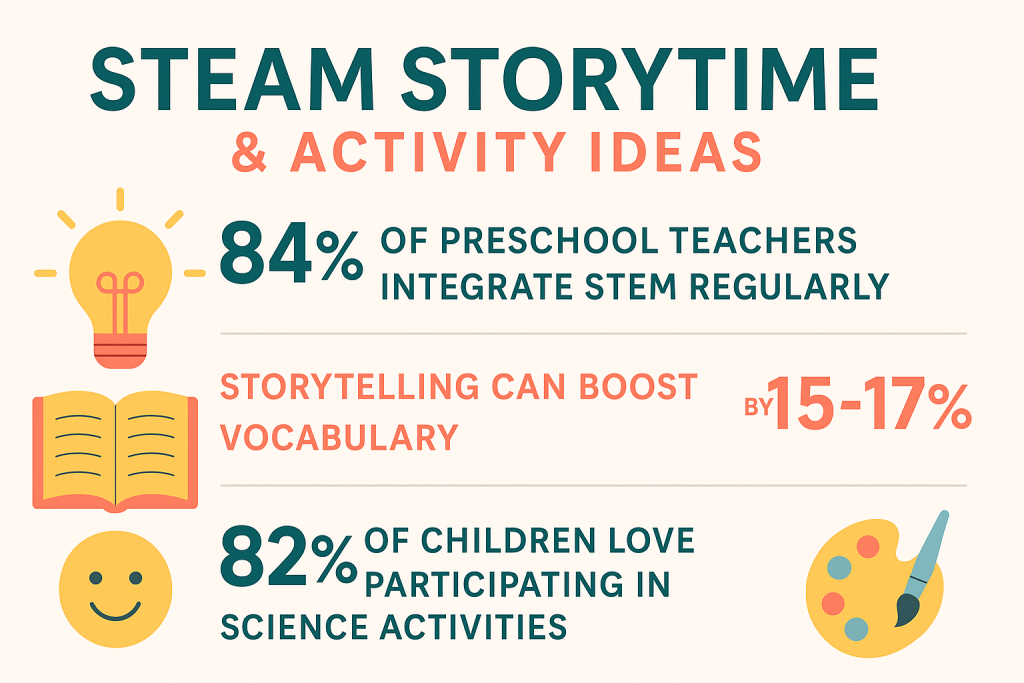
Family Involvement Matters
When parents and siblings join in, learning becomes community.
Let siblings take turns being the “story reader” or “science helper.”
Invite grandparents to share traditional tales that inspire building or crafting.
When learning feels shared, it feels joyful. And joy is the secret ingredient to lifelong curiosity.
Keeping Curiosity Alive Beyond Storytime
STEAM Storytime doesn’t end when the book closes.
Encourage your child to carry curiosity into daily life:
- After reading The Three Little Pigs, build different “houses” using straws, sticks, and blocks.
- After Pete the Cat and His Four Groovy Buttons, explore subtraction by removing real buttons or snacks.
- After The Tiny Seed, plant actual seeds and observe growth over time.
Everyday life is a lab, a studio, and a classroom—rolled into one.
Research-Backed Benefits of STEAM Storytime
Storytelling Boosts Cognitive & Emotional Growth
Storytime does more than ignite imagination — it strengthens developing minds. Research published in the Journal of Neuroscience Research found that when children listen to stories, it activates brain regions tied to memory, focus, and emotional engagement, helping them absorb information more effectively (see full study on storytelling and brain development).
Another study from Frontiers in Psychology discovered that interactive storytelling, where kids participate and retell stories, significantly improves vocabulary and comprehension (read the research on interactive storytelling benefits).
When stories are paired with hands-on activities — like in STEAM Storytime — children don’t just remember facts; they connect ideas emotionally and creatively.
FAQs About STEAM Storytime
What does STEAM stand for?
Science, Technology, Engineering, Art, and Math — five fields that encourage creativity and innovation in early learning.
How often should I do STEAM Storytime?
Just 15–20 minutes a few times a week can make a lasting impact. The key is consistency and enthusiasm.
What if my child isn’t into science or math?
They might be, just not in the traditional sense! Try blending art, stories, and play to find their natural entry point into curiosity.
Are special tools or materials required?
Not at all. Recycled materials, craft supplies, and imagination are enough. The Amazon picks above are simply for convenience and enrichment.
How can teachers use this in the classroom?
Pair stories with activity centers — a building zone, an art table, a discovery tray. It encourages independent exploration within structured learning.
Helpful Resource
If your child loves hands-on learning, explore this guide on wooden puzzles for toddlers. It offers creative ways to blend logic, play, and problem-solving—perfect for little minds who love to tinker and think.
The Joy of Watching Curiosity Grow
There’s something deeply heartwarming about watching a child’s face light up with realization—the moment they discover that stories aren’t just words, but invitations to explore.
STEAM Storytime is more than an activity; it’s an approach to life. It teaches kids that curiosity is powerful, mistakes are meaningful, and discovery can happen anywhere—on the page, at the kitchen table, or in the backyard.
So tonight, when you open a book, remember—you’re not just reading. You’re helping your child see the world as an endless adventure waiting to unfold. 💫
